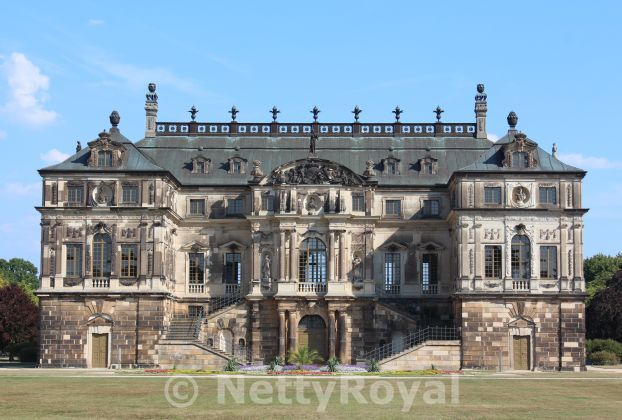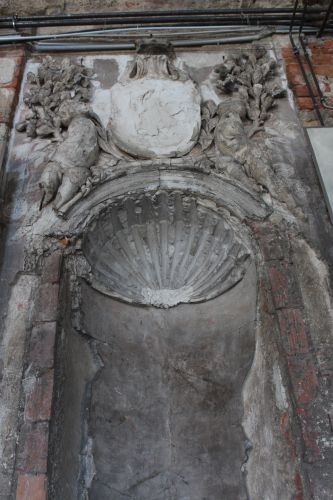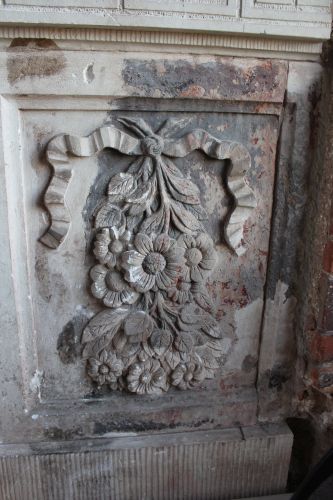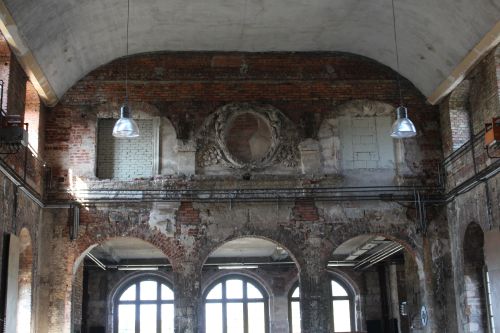In World War II the city of Dresden in Germany was heavily bombed, the most known one in February 1945. More than 6,5km2 of the city centre was destroyed, thousands of people killed. After the war the city was rebuild, parts of the historic inner city reconstructed. Some buildings were only restored in recent years, and some are still not fully restored to their former glory. One of these buildings is the Palais in the Grossen Garten (grand garden), a huge baroque style park in central Dresden, just outside the city center.


The garden wass established in 1676 on the orders of Johann Georg III, Elector of Saxony (1647-1691). Its pathways and avenues are arranged symmetrically. The layout of the garden was probably only finished by 1719 and wasn’t changed until early 19th century. The battles of 1813 had devastated the park. A landscape architect called Lenné was responsible for a comprehensive design scheme with a Zoological Garden. The baroque scheme was preserved. The garden became a public park. In the late 19th century the Dresden Zoo and a Botanical Garden were added. Nowadays you can even cross the park – from April to October – in a miniature railway. In one of the corners of the park since the 1880s you can find a small lake, the Carolasee, named after Queen Carola of Saxony. Nowaday ducks and swans are swimming in it. Next to it is a café-restaurant with the fitting name “Carolaschlösschen” (Carola Castle), where the ice cream is excellent. A great place to be on a warm summer day.



But back to the Palais, a summer and pleasure palace. Already the first design for the garden, by the royal gardener Göttler, shows the Palace as its centre piece. The building was designed by supreme architect Johann Georg Starcke and the construction started in 1678 and was finished around 1690. It is one of the earliest examples of baroque palacial architecture in Dresden. The rulers of Saxony used it as a location for games, theatrical performances and hunting feasts. Highlight in the history of the palace was the Venus feast on 23 September 1719, which was organised by August II the Strong, Elector of Saxony and King of Poland on the occasion of the wedding of his son Prince Friedrich August and Archduchess Maria Josepha of Austria. However the importance of the palace as a party residence soon declined, as there were now many more important palaces in the city. Planned conversions were never carried out. 1729 August II used the building to house his collection of antiquities, where they remained until 1747. After 1828 it was even used as a depot for gardeners and exhibition space, especially about gardening.
It is still surrounded by historical ornamental flower beds, cavalier lodges, a pond and ornamental vases and it is an impressive view when you enter the park via the Hauptallee (main avenue). The building however was heavily damaged in the 1945 bombings, and the inner decoration was completely lost, including the richly decorated festive hall. Soon after World War II a start was made to keep the palace and in 1969 the restoration on the outside was more or less finished, but afterwards was hardly used. The work on the roof finally was finished in 1993, more reconstruction work on the outside followed in the 1990s, the inside was only partly renewed. Only in 1995 the ground floor opened its doors for events. Still a lot of work has to be done at the upper floor. The “Förderverein Palais Grosser Garten e.V.” was founded in October 2000 to be able to collect funding for the reconstruction of the interior of the palace. They also organise cultural events in the building.
I was lucky in the Summer of 2015. The palace is open for special exhibitions, concerts and theatre performances, as it is completely safe to walk inside the building. When I was there, there was an architectural design exhibition. I happily paid the entrance fee to be able to have a look at the interior of the palace. I really hope that one day the building will be restored back to its former glory.
